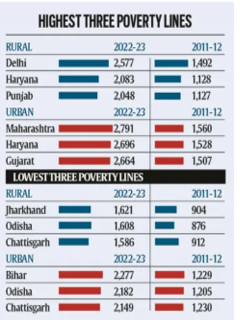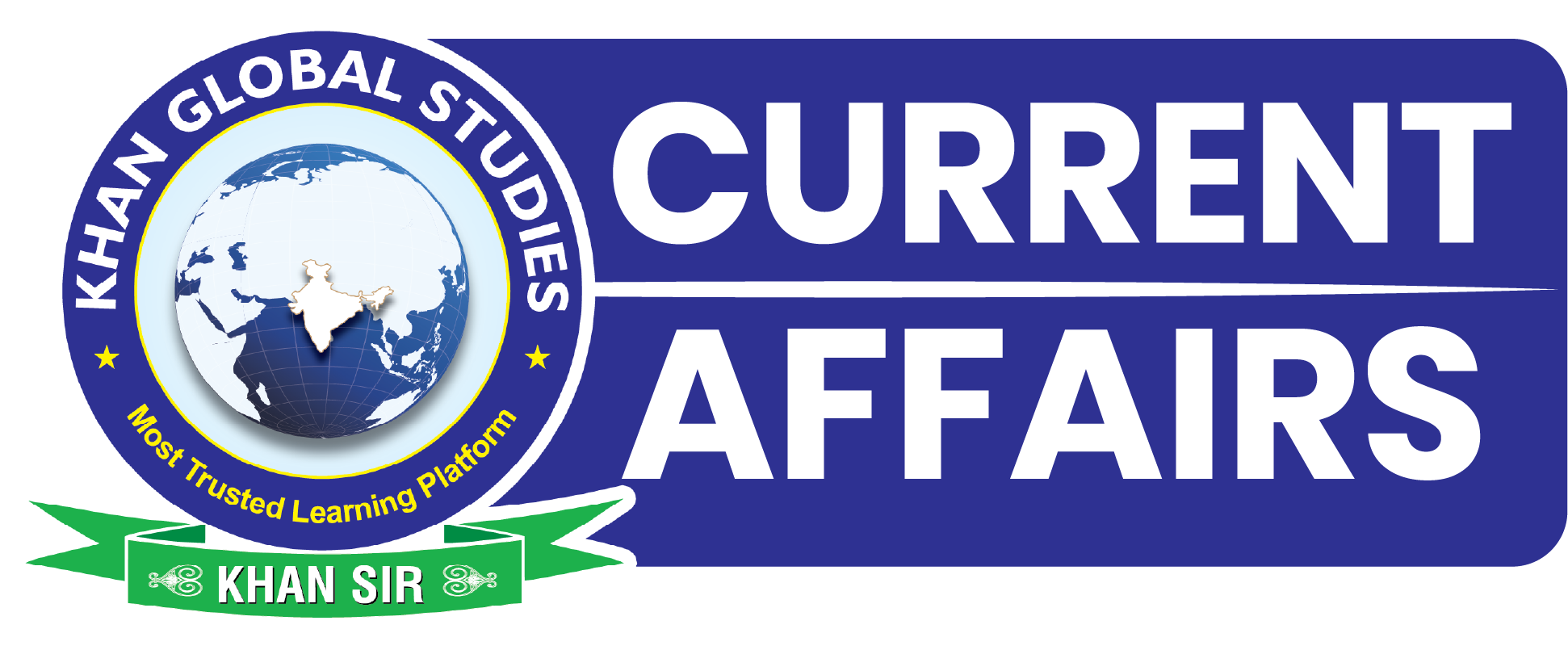SYLLABUS
GS-2: Issues relating to poverty and hunger.
Context: Recently, RBI economists from the Department of Economic and Policy Research updated the Rangarajan poverty line for 20 major states using the 2022–23 Household Consumption Expenditure Survey (HCES).
More on the News
- The All-India rural and urban poverty lines estimated by the Rangarajan committee were not updated by the RBI economists in their study.
- Instead of adjusting old poverty lines solely with Consumer Price Index (CPI) inflation, RBI economists designed a new price index reflecting the exact weights of the Rangarajan poverty line basket (PLB) and updated thresholds accordingly.
Key Highlights
- Major Poverty Reduction States: Rural poverty in Odisha declined from 47.8% (2011-12) to 8.6% (2022-23), while urban poverty in Bihar dropped from 50.8% to 9.1%.
- States with Minimal Change: Rural poverty in Kerala declined from 7.3% to 1.4%, and urban poverty in Himachal Pradesh declined from 8.8% to 2%.
• Rural–Urban Poverty Extremes:
- Himachal Pradesh recorded the lowest rural poverty (0.4%), while Chhattisgarh had the highest (25.1%).
- In urban areas, Tamil Nadu had the lowest (1.9%), and Chhattisgarh again the highest (13.3%).

• Changing Consumption Trends: Consumption patterns have evolved markedly between 2011-12 and 2022-23, indicating the need to revise the CPI basket and poverty lines for accurate assessment.
• Rise of Multidimensional Poverty Metrics: The focus has shifted from income-based to multidimensional poverty, measured through health, education, and living standards.
- India’s MPI declined from 29.17% (2013-14) to 11.28% (2022-23), reflecting substantial progress.
About the Rangarajan Committee
• Formed in June 2012 by the Planning Commission under Dr. C. Rangarajan to review poverty measurement methodology.
• Objective:
- To review global poverty estimation approaches to develop an India-specific method.
- To suggest ways to link poverty estimates with government welfare entitlements.
• Nutritional Requirement:
- Energy requirement: 2,155 kcal/person/day in rural areas and 2,090 kcal/person/day in urban areas.
- Protein/fat intake: 48g and 28g/capita/day in rural India and 50g and 26g/capita/day in urban areas.
• Poverty Threshold: Persons spending less than ₹47 per day in urban areas and ₹32 per day in rural areas are considered poor.
• Modified Mixed Reference Period (MMRP):
- 365 days for clothing, footwear, education, institutional medical expenses, and durable goods.
- 7 days for perishable items like edible oil, meat, vegetables, and spices.
- 30 days for other food items, fuel, and miscellaneous expenses.
• Normative and Behavioural Period:
- Emphasized consumption patterns determined by behaviour, using average requirements for nutrients based on ICMR norms.
- Considering the typical intake levels of the bottom 25-30% in rural areas and 15-20% in urban areas.
- Consumption basket designed to meet these normative nutrient levels, derived from NSSO data, was the basis for estimating poverty.
Household Consumption Expenditure Survey (HCES)
• Objective:
- To gather detailed information on household consumption and expenditure patterns.
- Assess the standard of living and well-being of households.
- Establish and update the basket of consumer goods and services.
- Provide weights for calculating Consumer Price Indices.
• Conducting Agency: The National Sample Survey Office (NSSO), under MoSPI.
• Latest Surveys: Two consecutive surveys were conducted:
- HCES: 2022-23: August 2022 to July 2023.
- HCES: 2023-24: August 2023 to July 2024.
Sources:
Indian Express
PIB
India IPO

